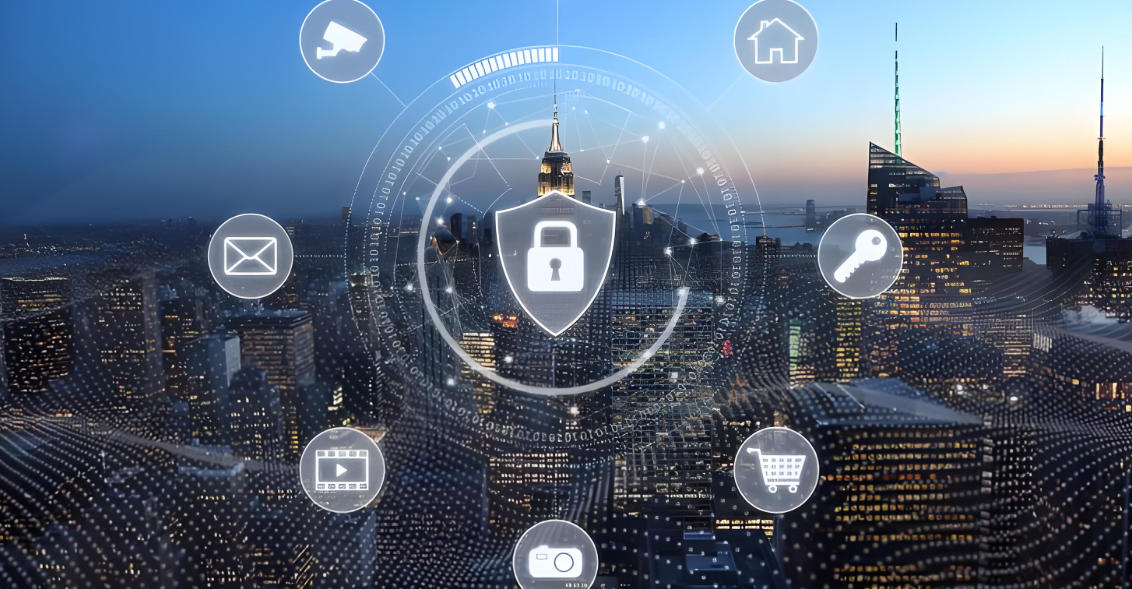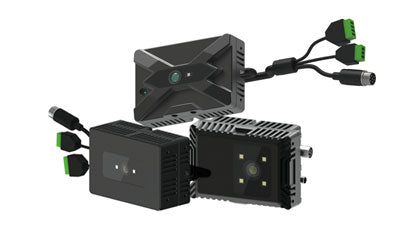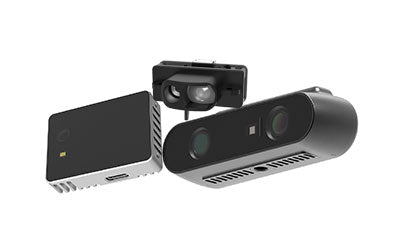TOF and Public Safety: Real-Time Crowd Security at Large Events

TOF and Public Safety: How Can Large-Scale Events Monitor Crowds in Real Time to Prevent Overcrowding and Stampedes?
With the continuous growth of large-scale events such as sports games, concerts, and exhibitions, public safety has become a major concern. When tens of thousands of people gather in a confined space, accidents can quickly escalate into overcrowding, stampedes, or even mass incidents. Efficient, real-time crowd monitoring and behavior management are therefore critical challenges for event security. In recent years, TOF (Time-of-Flight) technology has emerged as a breakthrough in public safety, providing precise crowd behavior monitoring capabilities and offering a new solution for large-scale event security.
What is a ToF (Time-of-Flight) Technology?
Time-of-Flight (ToF) technology measures the distance between a sensor and an object by calculating the time it takes for a light or sound signal to travel to the object and back.
How it works:
-
Signal emission: The ToF sensor emits a light pulse (usually infrared) or a sound wave toward the target.
-
Reflection reception: The signal reflects off the object and returns to the sensor.
-
Time measurement: The sensor calculates the signal’s travel time.
-
Distance calculation: Using the speed of light (or sound) and the measured time, the system calculates the distance to the object.
What is Public Safety?
Public safety refers to the protection of the general public in their daily life, work, and public activities, ensuring personal safety, property security, and social order stability.
It generally includes:
-
Preventing and responding to hazards: Natural disasters (earthquakes, floods, typhoons), accidents (fires, traffic incidents), and public health emergencies (pandemics).
-
Maintaining social order: Preventing crime, terrorism, and violent incidents that threaten public safety.
-
Emergency management and rescue: Implementing emergency plans, rescue systems, monitoring, and alert systems to reduce casualties and property damage.
-
Public service protection: Ensuring safety in transportation, fire protection, food and drug safety, and the environment.
In other words, public safety focuses not only on individual and property protection but also on societal stability and order.
1. Challenges in Large-Scale Event Security
In large-scale events, crowds are dense and dynamically complex. Traditional security measures often rely on manual patrols and 2D video surveillance, facing the following issues:
-
High crowd density: Key areas such as entrances, exits, and stages are prone to congestion and safety hazards.
-
Blind spots in traditional video surveillance: Camera coverage can be limited by angle and lighting, especially at night or in dim conditions.
-
Insufficient risk prediction: Conventional systems mostly provide post-event records and struggle to proactively identify potential hazards.
Therefore, large-scale event security requires more efficient, intelligent technologies to monitor crowd behavior and provide early risk warnings.
TOF Real-Time Crowd Behavior Monitoring
TOF public safety technology emits light signals and measures reflections to calculate distances, generating high-precision 3D depth data. Compared to traditional 2D cameras or infrared counters, TOF can overcome lighting and occlusion limitations, enabling real-time, accurate monitoring of crowd behavior—especially suitable for large events, transit hubs, and public spaces.
Core Advantages
-
3D Sensing and Dynamic Tracking
TOF sensors capture the 3D position, density, and motion trajectory of crowds in real time, solving occlusion and overlap issues common with 2D cameras. Whether at concert entrances or subway transfer halls, TOF ensures full coverage without blind spots. -
Crowd Behavior Monitoring and Anomaly Detection
With AI algorithms, TOF depth data can detect unusual crowd behaviors, such as sudden gathering, rapid reverse movement, or individuals lingering in sensitive areas. These anomalies are flagged promptly to assist security personnel in rapid response. -
Risk Warning and Proactive Intervention
The system can trigger warnings when crowd density rises or when conditions suggest potential congestion or stampede. Security teams can use real-time data to implement measures like flow diversion, crowd guidance, or partial area control, effectively reducing accident risks.
Example Scenarios
During peak entry at concerts or sports events, entrances can become temporarily crowded. TOF monitors each entry, calculating crowd density with 3D data. When density approaches safety thresholds, the system automatically triggers warnings on the command center screen. Security staff can then adjust flows or open alternate routes, preventing potential accidents.
In subway stations or mall promotions, TOF systems analyze crowd speed, direction, and dwell time, identifying potential bottlenecks early and allowing dynamic management. Compared to manual patrols, TOF enables real-time, automated, data-driven public safety management, significantly improving emergency response efficiency.

Integration with Security Systems
TOF technology does not operate in isolation—it can integrate with existing intelligent security platforms to form a comprehensive and efficient safety management system. Integration enhances data interoperability, visualization, and enables multi-dimensional collaboration and unified response.
1. AI Analysis Integration
TOF 3D depth data, when combined with AI and deep learning models, can transform into actionable behavior recognition insights:
-
Anomaly detection: Detect sudden running, falling, fighting, or unusual stopping within crowds.
-
Pattern learning and prediction: Predict potential risky behaviors based on historical data, providing pre-event alerts.
-
Intelligent classification: 3D data improves machine recognition and reduces false alarms compared to 2D video.
2. Integration with Unmanned Patrol Devices
TOF devices can be mounted on unmanned platforms to extend coverage:
-
Drone + TOF: High-altitude scanning monitors large crowds and dynamic situations, ideal for plazas, concerts, and sports events.
-
Patrol robots + TOF: In narrow passages or critical zones, robots can provide mobile, precise monitoring while reducing human exposure to risk.
-
Dynamic patrol coverage: Combining fixed and mobile sensors creates a “full-area + key-zone” monitoring strategy.
3. Multi-System Coordination
TOF data can be deeply integrated with other security systems to form a complete smart security network:
-
Video surveillance coordination: Overlay TOF 3D data on camera footage for multi-dimensional visualization.
-
Access control linkage: Detect unusual entries/exits in key areas.
-
Emergency broadcast triggers: Automatically activate alerts when overcrowding or stampede risks are detected.
-
Unified command: All data converge at the security command center for real-time visualization and rapid decision-making.
4. Value of Integrated Application
Multi-system integration and intelligence significantly enhance public safety management:
-
Enhanced early warning: Cross-system data improves accuracy and timeliness.
-
Optimized manpower allocation: Reduces manual patrol burdens, focusing security personnel on critical risks.
-
Improved emergency response: Coordinated systems shorten response times from detection to action.
-
Smart security upgrade: Shifts from passive response to proactive prediction and dynamic prevention.
For example, at a large concert, TOF, AI, facial recognition, drone patrols, and emergency broadcasting work together. The system monitors crowd flow in real time, and when local crowd density exceeds thresholds, broadcasts are triggered to guide evacuation, greatly reducing accident risks. This systematic integration represents the future of smart security.

Examples and Effectiveness of TOF in Public Safety
In practical applications, TOF public safety technology has demonstrated significant effectiveness in large-scale events, public spaces, and high-risk environments. Its advantages are not only reflected in real-time monitoring and anomaly detection but also in decision support and overall safety enhancement.
1. Large-Scale Sports Events
In international football matches, marathons, or other major sports events, TOF systems monitor spectator movement using high-precision 3D depth data:
-
Real-time crowd tracking: TOF sensors capture crowd distribution at entrances, exits, seating areas, and surrounding venues.
-
Anomaly detection: AI algorithms identify abnormal behaviors such as pushing, reverse movement, or congestion, triggering early warnings.
-
Peak period crowd management: Real-time data allows security personnel to dynamically adjust the number of open exits and traffic routes, enabling rapid crowd dispersal.
-
Notable results: At an international football match, TOF-assisted management reduced incident rates by approximately 40%, significantly improving event safety.
2. Concerts and Large Event Security
At large-scale concerts, exhibitions, or festival events, crowd density is high and movement frequent, making traditional monitoring insufficient:
-
Detection of abnormal crowd gatherings: TOF combined with AI can monitor crowd density around stages, entrances, and passageways in real time. Abnormal aggregation or reverse flow triggers immediate alerts.
-
Guidance and intervention: Warning information is promptly sent to security personnel and command centers, and can be linked with emergency broadcasts or guided passages to quickly control potential risks.
-
Enhanced safety: At a 10,000-person concert, the TOF system successfully prevented stampede incidents, ensuring both attendee safety and smooth event execution.
3. Improved Management Efficiency
TOF systems not only enhance on-site safety but also improve overall security management efficiency:
-
Rapid decision-making: Real-time 3D data combined with AI analytics enables command centers to quickly identify risk areas and crowd distribution, improving decision speed by over 30%.
-
Optimized resource allocation: TOF data helps allocate security personnel, patrol robots, and drones effectively, achieving dynamic coverage of critical areas.
-
Reduced manpower pressure: Minimizes repetitive manual patrols, allowing security staff to focus on key risk events.
4. Comprehensive Value
These cases demonstrate that TOF technology has irreplaceable core value in crowd monitoring and large-scale event security:
-
Comprehensive monitoring: Overcomes the occlusion limitations of 2D cameras for full 3D coverage.
-
Strong anomaly warning capability: Detects congestion or dangerous behavior in advance, allowing timely intervention.
-
Data-driven decision-making: Visualized analytics significantly enhance emergency response speed and accuracy.
-
Reduced safety risks: Ensures the overall safety of attendees and public spaces.
With broader application in large-scale public events, smart city scenarios, and high-risk environments, TOF technology is becoming an indispensable intelligent core of modern security systems, providing reliable support and proven results in public safety management.

Future Development Trends
With the rapid development of AI, drones, robots, edge computing, and smart city infrastructure, the application of TOF (Time-of-Flight) technology in public safety and large event security is expanding. Key future trends include:
1. AI + TOF Intelligent Analysis
-
Predictive anomaly detection: Combining deep learning, TOF systems can not only detect real-time anomalies but also predict potential risks based on historical data, such as crowd accumulation, blocked exits, or reverse flow risks.
-
Automated decision support: AI processing of 3D point cloud data can automatically generate safety reports and crowd guidance strategies, providing intelligent support to command centers.
-
Individual and group behavior analysis: The system can distinguish between single anomalous individuals and abnormal group behaviors for more refined risk management.
2. Full-Coverage Drones and Mobile Platforms
-
Integrated aerial and ground monitoring: Drones equipped with TOF sensors can quickly scan large indoor or outdoor venues, covering blind spots of ground-based devices.
-
Dynamic patrol and focused coverage: Ground patrol robots, handheld TOF devices, and drones collaborate for multi-level, multi-angle monitoring.
-
Substitute operations in hazardous areas: Drones and robots can monitor dense crowds or dangerous areas in real time, protecting security personnel.
3. Edge Computing and Low-Latency Response
-
Real-time data processing: TOF generates large amounts of data; edge computing allows on-site rapid analysis, reducing reliance on the cloud and enabling millisecond-level responses.
-
Localized autonomous warning: Even in network instability or cloud limitations, edge devices can independently detect anomalies and issue warnings.
-
Data security and privacy: Local processing keeps sensitive information private, uploading only necessary aggregated data.
4. Smart City and Multi-System Integration
-
Unified security management: TOF systems can integrate with video surveillance, access control, emergency broadcasting, and traffic management, forming a unified smart security network.
-
Optimized resource dispatch: Real-time crowd data enables intelligent allocation of security personnel, evacuation routes, and emergency resources.
-
Data-driven decision loops: Long-term storage of TOF data allows event review, risk analysis, and future planning, creating a closed-loop safety management system.
5. Expanded Future Applications
-
Large public events: Enhanced safety at concerts, sports games, and festivals.
-
Public transport and commercial complexes: High-precision crowd flow monitoring and anomaly detection in subways, airports, and shopping centers.
-
Emergency and disaster management: TOF combined with drones and AI allows rapid situational awareness, supporting decision-making and resource allocation during emergencies.
Overall, the future development of TOF technology will focus on intelligent, unmanned, full-scene coverage, and data-driven decision-making. By integrating deeply with AI, drones, edge computing, and smart city platforms, TOF not only improves large-scale event security efficiency and safety but also becomes a key technology for building the future intelligent public safety system.
Synexens Industrial Outdoor 4m TOF Sensor Depth 3D Camera Rangefinder_CS40
Our professional technical team specializing in 3D camera ranging is ready to assist you at any time. Whether you encounter any issues with your TOF camera after purchase or need clarification on TOF technology, feel free to contact us anytime. We are committed to providing high-quality technical after-sales service and user experience, ensuring your peace of mind in both shopping and using our products



